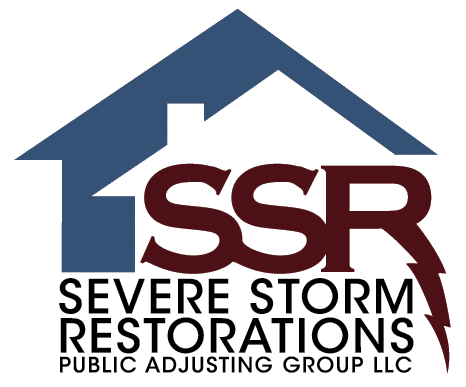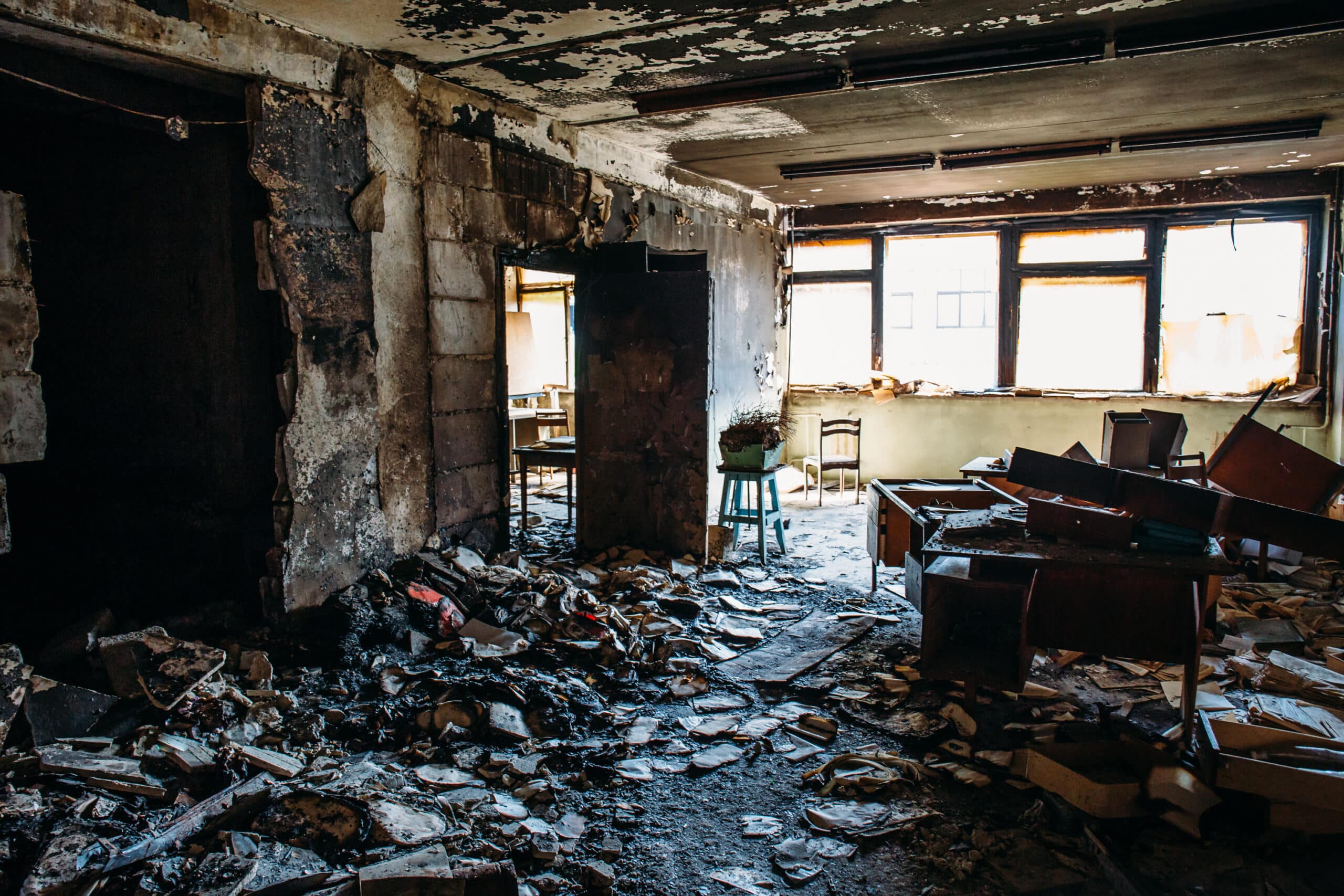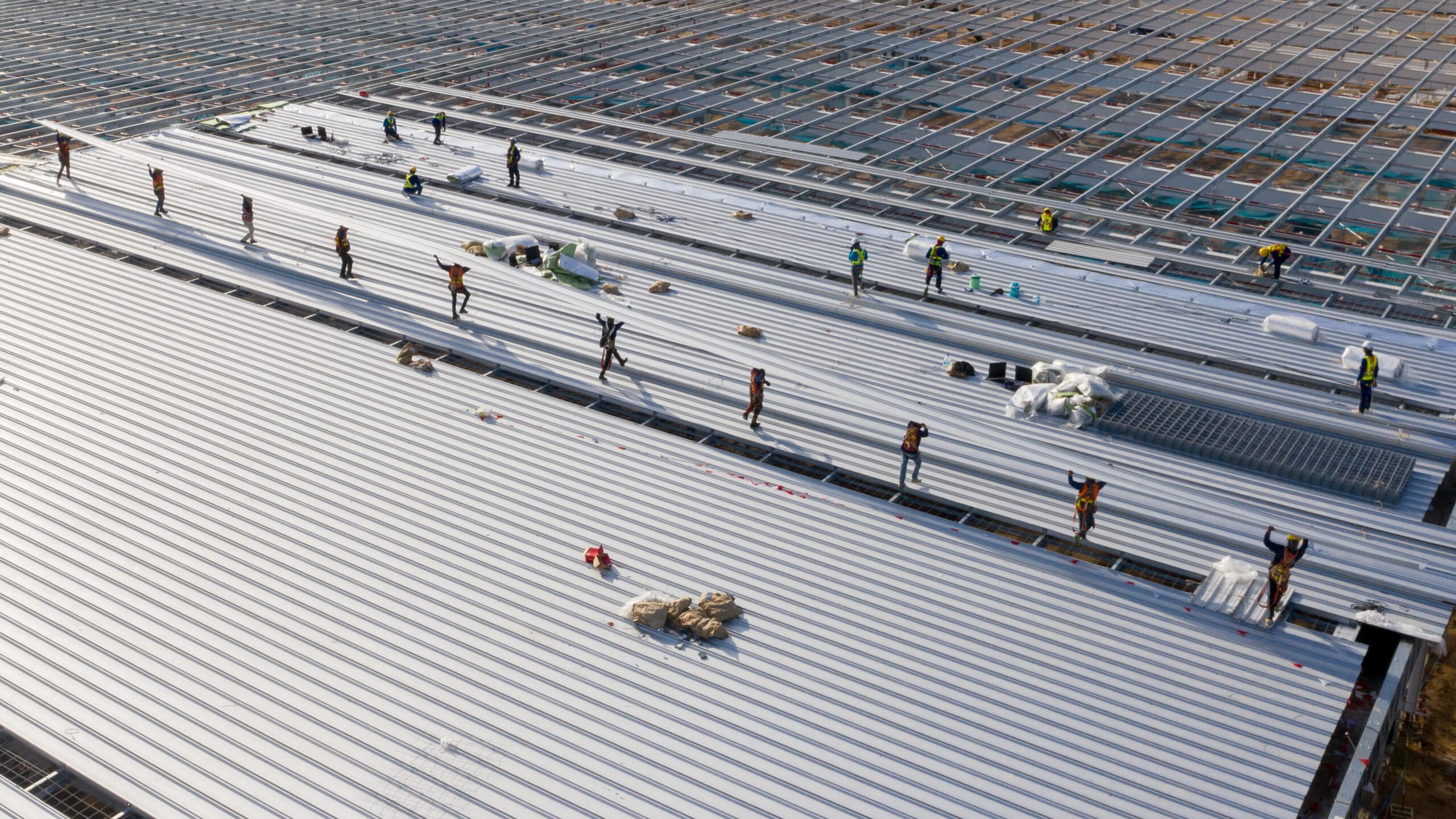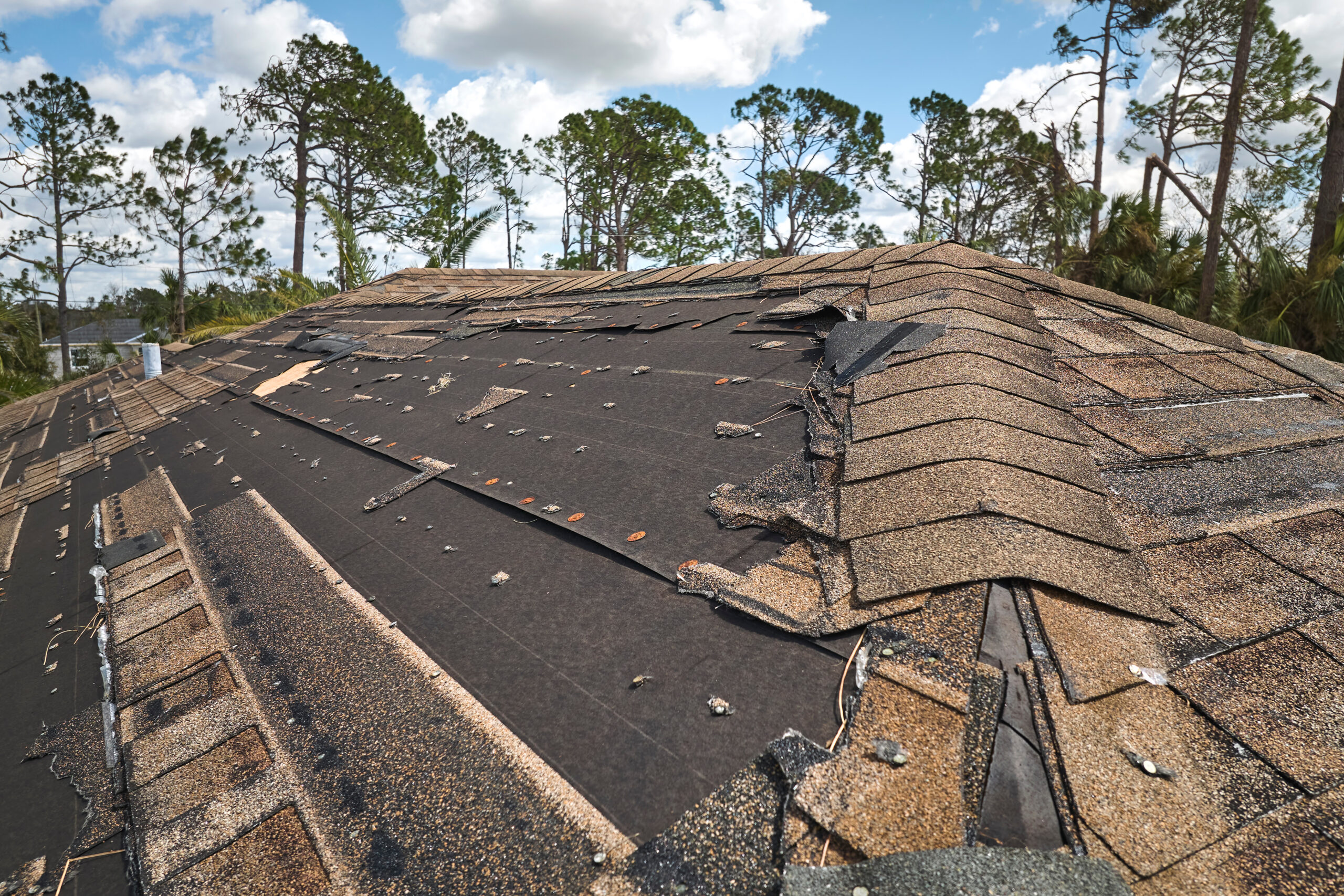Table of Contents
Fires are devastating, leaving behind extensive damage and emotional distress. The destruction often goes beyond what’s visible, with smoke, soot, and water affecting hidden areas. Smoke can penetrate walls and fabrics, causing lingering odors and potential health risks, while water used to fight the fire can lead to mold and structural issues. At Severe Storm Restorations, LLC, we understand the challenges of fire restoration and are committed to helping property owners recover quickly. Our expertise ensures a thorough restoration process to return your property to its pre-fire condition. This guide will walk you through the key steps of fire restoration, offering solutions to ensure a complete and effective recovery process.
Understanding Fire Damage
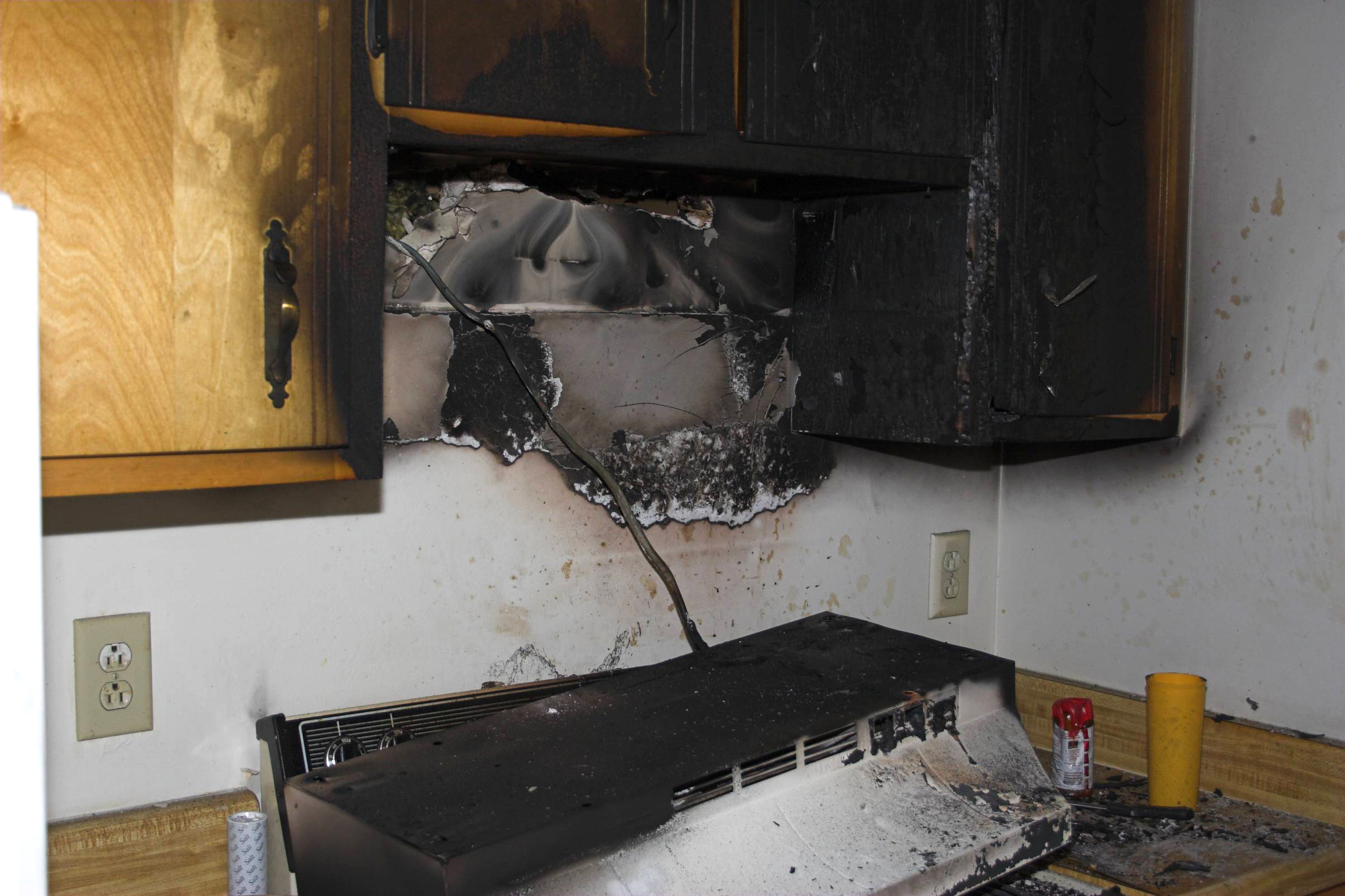
Before diving into the restoration process, it’s crucial to understand the different types of damage a fire can cause. Fire damage extends far beyond the obvious, visibly burned areas; it involves a range of destructive forces that can compromise the safety and integrity of your entire property. The intense heat from the flames can weaken structural components, while smoke infiltrates every corner, leaving behind corrosive residues and persistent odors. Additionally, the water or chemicals used to extinguish the fire often result in significant secondary damage, such as water saturation and potential mold growth. Understanding these various forms of damage is essential for a comprehensive restoration approach, ensuring that every aspect of your property is thoroughly assessed and properly restored.
1. Primary Fire Damage
This is the most apparent damage caused by the flames. It includes the burning, charring, and destruction of materials such as wood, drywall, furniture, and personal belongings. The intensity of the fire and the duration it burns directly influence the extent of primary fire damage.
2. Smoke and Soot Damage
Even after the flames are extinguished, smoke and soot continue to cause damage. Smoke can penetrate walls, floors, and ceilings, leaving behind a lingering odor and staining surfaces. Soot, a black powdery residue, settles on surfaces and can cause corrosion, discoloration, and persistent odors if not properly cleaned.
3. Water Damage
Ironically, one of the most common forms of damage after a fire is water damage. The water used to extinguish the fire can saturate building materials, leading to mold growth, structural damage, and ruined personal items. Water damage needs to be addressed quickly to prevent long-term issues.
4. Heat Damage
The extreme heat from a fire can warp, melt, or weaken structural components and personal belongings. Even if items are not directly burned, the intense heat can cause significant damage, particularly to plastics, metals, and glass.
The Importance of Immediate Action
Time is critical when addressing fire damage, as delays can worsen conditions and increase repair costs. Smoke and soot continue to penetrate surfaces after the fire, causing damage to walls, ceilings, furniture, and belongings. These residues are acidic, leading to corrosion, stains, and structural issues. Additionally, water used to extinguish the fire can create mold within 24 to 48 hours. Immediate action is essential to prevent further deterioration and start the restoration process. Acting quickly helps preserve your property and ensures a safer, more effective recovery.
Steps to Take Immediately After a Fire
After a fire, it’s natural to feel overwhelmed, but taking the right steps can make a significant difference in the recovery process. Here’s what you should do immediately after a fire:
1. Ensure Safety First
Before anything else, ensure that you and your family are safe. Do not re-enter the property until it has been deemed safe by the fire department or another authority. If you have any doubts about the structural integrity of the building, wait for professionals to conduct a safety assessment.
2. Contact Your Insurance Company
As soon as possible, notify your insurance company about the fire. Provide them with detailed information about the incident, including when and where it occurred, the extent of the damage, and any steps you’ve already taken. Your insurance company will guide you through the claims process and may recommend a fire restoration company.
3. Document the Damage
If it’s safe to do so, document the damage by taking photographs and videos of the affected areas. This documentation will be valuable when filing your insurance claim. Capture images of all damaged items, structural damage, and any areas affected by smoke or water.
4. Contact a Professional Fire Restoration Company
Engage a professional fire restoration company like Severe Storm Restorations, LLC as soon as possible. Fire restoration is a complex process that requires specialized knowledge, equipment, and techniques. Professionals can assess the damage, develop a restoration plan, and begin the recovery process swiftly.
The Fire Restoration Process
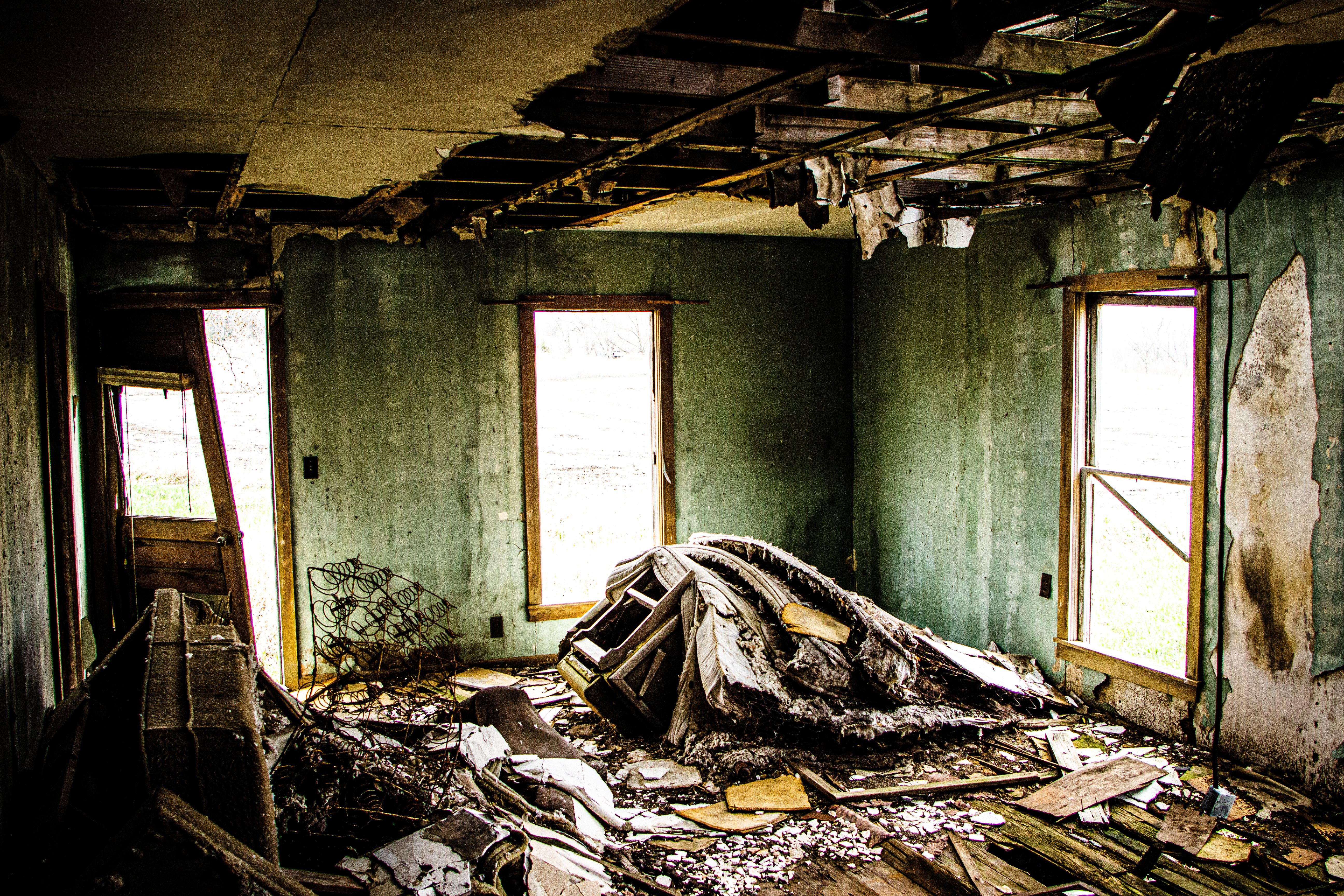
Fire restoration involves several steps to ensure that your property is fully restored. Here’s an overview of the fire restoration process:
1. Initial Assessment and Inspection
The first step in the fire restoration process is a thorough assessment and inspection of the property. This involves evaluating the extent of fire, smoke, soot, and water damage. The restoration team will document the damage and create a detailed plan outlining the necessary repairs and restoration steps.
2. Securing the Property
To prevent further damage and unauthorized access, the restoration team will secure the property. This may involve boarding up windows, doors, and other openings, as well as placing tarps over damaged roofs. Securing the property also helps protect it from weather-related damage during the restoration process.
3. Water Removal and Drying
If water was used to extinguish the fire, the next step is to remove it from the property. This involves using industrial-grade pumps, vacuums, and dehumidifiers to extract water and dry the affected areas. Thorough drying is crucial to prevent mold growth and further structural damage.
4. Smoke and Soot Removal
Smoke and soot removal is a critical step in the restoration process. The restoration team will clean all surfaces, including walls, ceilings, floors, and personal belongings, to remove soot and smoke residues. Specialized equipment and cleaning products are used to ensure that soot is completely removed and that surfaces are restored to their original condition.
5. Odor Removal and Deodorization
Even after smoke and soot are removed, a lingering odor can persist. The restoration team will use advanced deodorization techniques, such as thermal fogging, ozone treatment, and air scrubbers, to eliminate smoke odors from the property. This step is essential for restoring indoor air quality and making the property habitable again.
6. Structural Repairs
Once the property is clean and dry, structural repairs can begin. This may involve repairing or replacing damaged drywall, flooring, ceilings, and other structural components. The restoration team will also address any heat damage, ensuring that all structural elements are safe and stable.
7. Restoring Personal Belongings
Fire can cause extensive damage to personal belongings, but many items can be restored with the right techniques. The restoration team will clean, repair, and restore salvageable items, such as furniture, electronics, clothing, and important documents. In some cases, items may need to be sent to an off-site facility for specialized cleaning and restoration.
8. Final Inspection and Restoration Completion for Fire Restoration
Once all repairs and restoration work are completed, a final inspection is conducted to ensure that the property is fully restored and safe for occupancy. The restoration team will walk you through the completed work, address any concerns, and ensure that you are satisfied with the results.
The Role of a Certified Public Adjuster in Fire Restoration
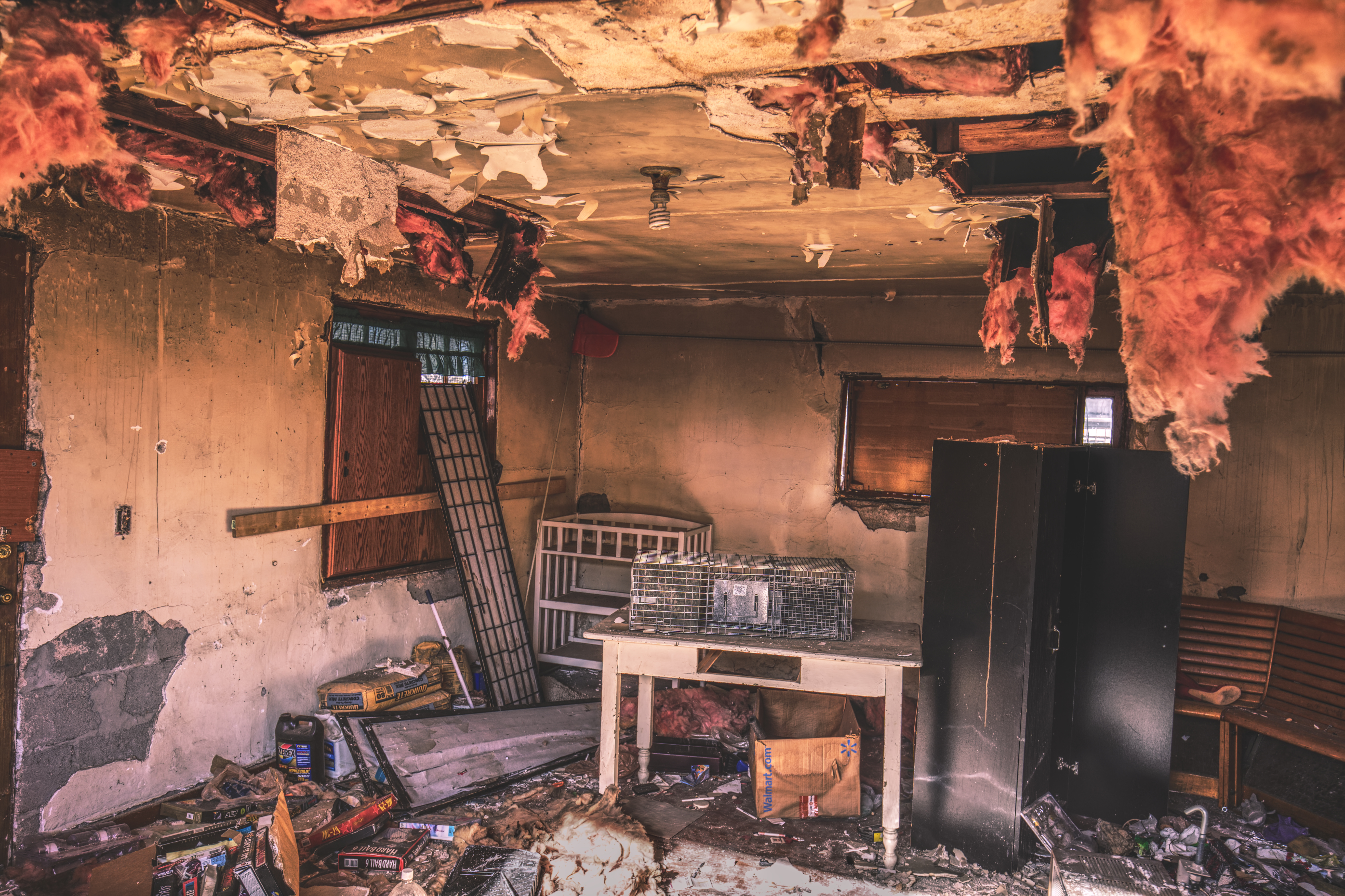
Navigating the insurance claims process after a fire can be challenging, especially when dealing with significant damage. A Certified Public Adjuster (CPA) can be an invaluable asset in this situation. CPAs are independent professionals who work on behalf of the policyholder to ensure that they receive a fair and comprehensive settlement from their insurance company.
1. Assessment and Documentation for Fire Restoration
A CPA will conduct a thorough assessment of the fire damage and document all losses. They will ensure that all damages, including those that may not be immediately visible, are accounted for in the insurance claim.
2. Negotiation with Insurance Companies
Insurance companies may try to minimize the payout by downplaying the extent of the damage. A CPA will negotiate with the insurance company on your behalf to ensure that you receive the full amount you are entitled to under your policy.
3. Managing the Claims Process
The claims process can be complex and time-consuming. A CPA will handle all aspects of the process, including filing paperwork, communicating with the insurance company, and managing deadlines. This allows you to focus on the restoration process without the added stress of dealing with insurance claims.
Preventing Future Fires: Tips for Homeowners and Businesses
While fire restoration is crucial after a fire, preventing future fires is equally important. Here are some tips to help you reduce the risk of fire on your property:
1. Install Smoke Alarms
Smoke alarms are your first line of defense against fires. Ensure that smoke alarms are installed in key areas of your property, including bedrooms, kitchens, and hallways. Test them regularly and replace batteries at least once a year.
2. Maintain Electrical Systems
Faulty electrical systems are a common cause of fires. Have your electrical system inspected by a licensed electrician regularly and address any issues immediately. Avoid overloading circuits and using damaged electrical cords.
3. Practice Safe Cooking Habits
The kitchen is one of the most common areas where fires start. Never leave cooking unattended, and keep flammable items away from the stove. Install a fire extinguisher in the kitchen and know how to use it.
4. Store Flammable Materials Safely
Store flammable materials, such as gasoline, propane, and cleaning supplies, in a cool, dry place away from heat sources. Keep them in their original containers and follow safety instructions for storage.
5. Create an Emergency Plan
Having an emergency plan in place can save lives in the event of a fire. Develop a fire evacuation plan for your property and ensure that all occupants know how to exit safely. Practice fire drills regularly.
Conclusion
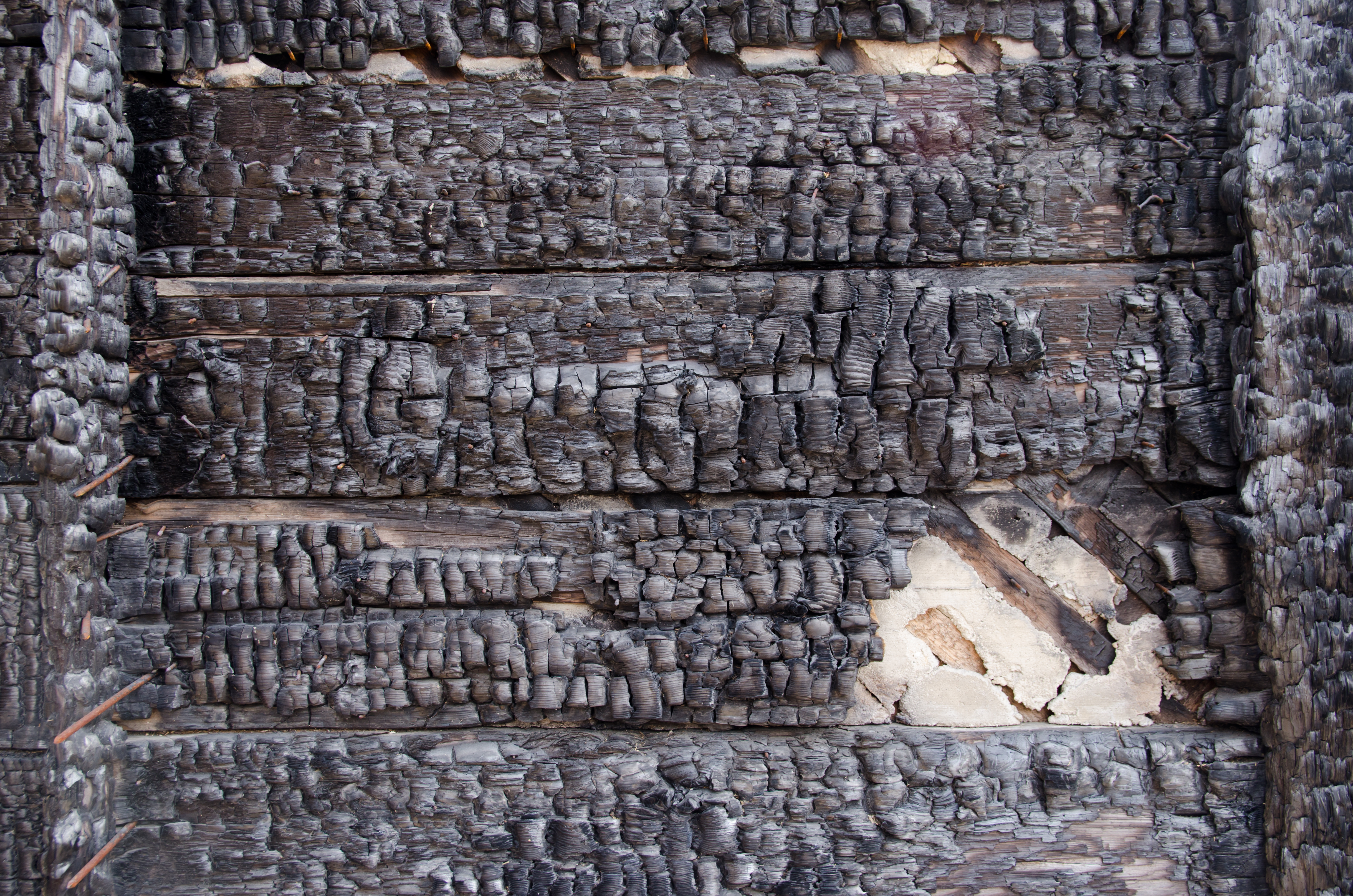
Fire restoration is a complex process that requires detailed planning, specialized skills, and a clear understanding of the different types of damage a fire can cause. The initial steps include securing the property, removing water, and addressing immediate hazards, followed by the more intricate tasks of cleaning smoke and soot, removing odors, and making structural repairs. Each phase must be handled with precision to prevent further damage and ensure a complete recovery. With the right expertise, you can restore your property to its pre-fire condition, ensuring both safety and peace of mind.
At Severe Storm Restorations, LLC, we are dedicated to providing expert fire restoration services tailored to your specific needs. Our team of professionals brings years of experience, advanced tools, and a commitment to excellence. From the initial assessment to the final stages of the restoration process, we handle everything with care and efficiency. Whether it’s smoke damage cleanup or structural repairs, our fire restoration services ensure your property is fully restored, helping you move forward with confidence.
Table of Contents
Introduction
- The Devastation of Fire Damage
- Importance of Professional Fire Restoration
Understanding the Types of Fire Damage
- Primary Fire Damage
- Smoke and Soot Damage
- Water Damage from Firefighting Efforts
- Heat Damage
The Importance of Immediate Action
- Ongoing Damage from Smoke and Soot
- Mold Growth from Water Damage
- Why Quick Response Matters
Essential Steps to Take Immediately After a Fire
- Ensuring Safety First
- Contacting Your Insurance Company
- Documenting the Damage
- Engaging a Professional Fire Restoration Company
The Fire Restoration Process
- Initial Assessment and Inspection
- Securing the Property
- Water Removal and Drying
- Smoke and Soot Removal
- Odor Removal and Deodorization
- Structural Repairs
- Restoring Personal Belongings
- Final Inspection and Restoration Completion
The Role of a Certified Public Adjuster in Fire Restoration
- Assessment and Documentation
- Negotiation with Insurance Companies
- Managing the Claims Process
Preventing Future Fires: Tips for Homeowners and Businesses
- Installing Smoke Alarms
- Maintaining Electrical Systems
- Practicing Safe Cooking Habits
- Storing Flammable Materials Safely
- Creating an Emergency Plan
Conclusion
- The Importance of Professional Help
- Severe Storm Restorations, LLC: Your Partner in Recovery
